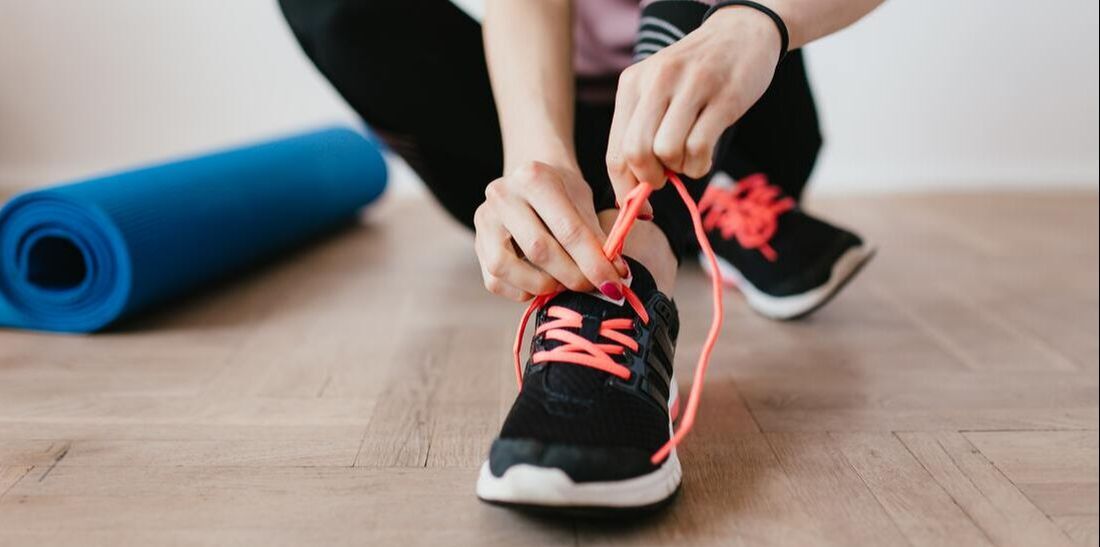
Considering exercise but have noticed either you:
Experience urine loss when you run, walk, lift or jump?
As a result of this, for many both men and women, they stop the exercise and for some cringe at the idea of doing any of the above-mentioned activities due to fear of experiencing issues down below. In the clinic, we see many people both men and women who do come for this exact concern, and unfortunately many feel hopeless and defeated voicing exercising is the last thing on their mind. Now it goes without saying the numerous health benefits of exercises and noted on this link.
Here we take a closer look at how exercise can start of with movement. First what is happening when there is urine loss with exercise?
This could be due to a number of reasons. Common exercises such as running, lifting, jumping or skipping can result in pelvic floor issues such as urinary incontinence also known as stress incontinence. This is due to the impact with the ground that increases the intraabdominal pressure and if the pelvic floor muscles are weak can result in loss of urine. Consequently, lack of exercise can lead to weight gain which can also contribute to pelvic floor dysfunction (Monga et al, 2015). This becomes a vicious cycle and they can feel trapped in not knowing what to do.
So, we look at the aspect of movement, because when faced with pelvic floor dysfunction, exercise can certainly be associated with negative connotations and fearful behaviour. So, in this blog, I share three tips on how to maximize your physical health by starting to move.
Tip #1: Seek help
Now, pelvic floor dysfunction is common, but not normal. It requires a very individualized approach to understand what exactly is going on. Pelvic floor dysfunction can entail bladder incontinence, bowel incontinence, pelvic pain, and pelvic organ prolapse amongst many other symptoms. Unfortunately, due to the nature of these concerns, many are embarrassed to talk about it and to seek help. So, I encourage you to seek help. If not able to have these conversations with family and friends, but certainly, speak to your healthcare provider who can certainly point you in the right direction.
Tip #2: Get informed
Here at Inner Active Physiotherapy, we really want to understand what is going on in your world by understanding your world in particular your lifestyle habits such as fluid intake, bowel routine alongside what your goals are. This information is often crucial to unlocking some of the potential contributors that you may be unknowingly making your situation worse! Getting informed is a start. Our holistic approach is vital to know what is really going on and be able to establish a program that is individualized and customized to your needs.
Tip #3: Start the habits
Implementation is key. Identifying the unhelpful or even bad habits and quickly replacing them with good ones is a very important step. Oftentimes, we find women might stop drinking due to fear of leakage or might start to adopt the habit of what is known as “JIC” (Just in Case), going to the toilet often and frequently without an urge, and that can also lead to the bladder giving concerns. Small and consistent changes play a major role in seeing improvements.
At Inner Active Pelvic Health and physiotherapy, our physiotherapists works with you to come up with a plan that you will find easy and enjoyable to follow.
For more details on what an appointment would entail check out this link
We even have an app that can help you out!
The benefits of moving are numerous but sometimes identifying the ones specific to you may just be what you need to help you to get going.
I hope this has helped to highlight some of the several tips that can really help you get started – to think about how to, when to and why move. If you or know of anyone who’s suffering from pelvic floor dysfunction, please reach out. Seek help. One of our pelvic floor physiotherapists can help you to help you reach your goals.
Tafy Seade
Physotherapist, Inner Active Pelvic Health
Resources





